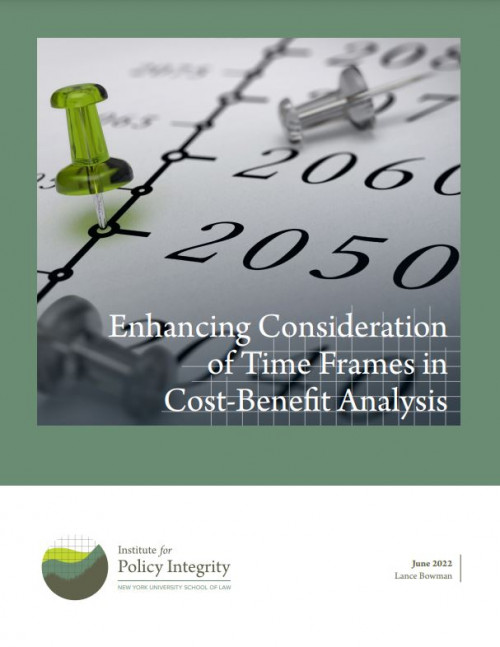Federal agencies frequently provide no justification for their analytical time frame when analyzing the costs and benefits of a policy. This is true even when there are costs and benefits that clearly occur beyond the time frame chosen by the agency. In so doing, agencies risk overlooking key long-term impacts that may justify more stringent regulation.
This report argues that the Office of Management and Budget (OMB) should take steps to improve how agencies consider analytical time frames in their cost-benefit analyses. In particular, the report recommends that OMB include the following guidance to agencies in its upcoming revisions to Circular A-4 to ensure that agencies devote more thorough attention to their choice and explanation of the analytical time frame:
1. Identify and discuss the analytical time frame in a dedicated section of the regulatory impact analysis.
2. Explain in detail any limitations affecting the choice of analytical time frame.
3. Address whether the analysis is sensitive to the choice of analytical time frame.
4. Conduct a temporal break-even analysis when significant costs or benefits occur beyond the analytical time frame.
5. Maintain the analytical time frame's length, at minimum, in subsequent rulemakings.

